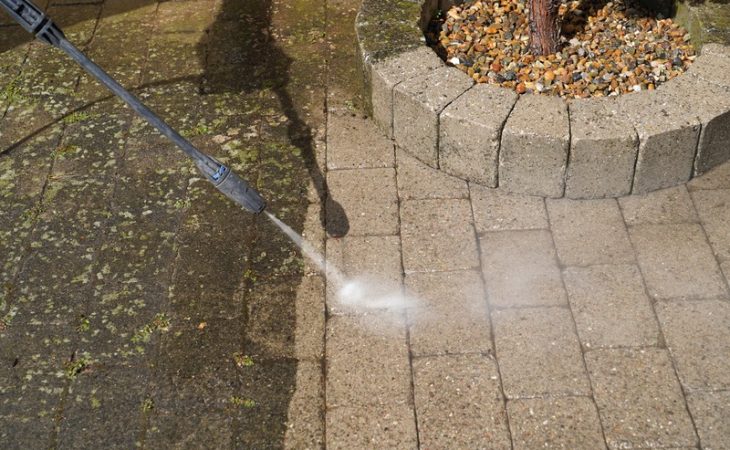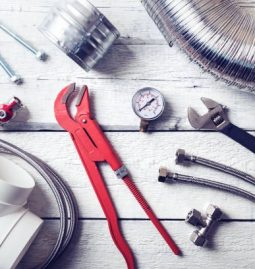Power washing is an effective method to rejuvenate surfaces around your property, but there’s a common concern about the potential damage it could cause. The high-pressure water stream, if not managed correctly, can negatively impact various materials. This article will address whether power washing can be harmful and provide practical tips to steer clear of issues. Additionally, it highlights when professional assistance might be the best course of action.
Potential Risks of Power Washing on Surfaces
Indeed, power washing can damage surfaces if not handled with care. The method involves a high-pressure water stream that, if applied incorrectly, can strip paint, erode mortar, and damage delicate materials. It’s crucial to understand the specifications of the material in question to adjust the service accordingly. For instance, while hardwood, composite wood, and painted surfaces need extra care due to their susceptibility to damage, tougher surfaces like concrete and brick can also suffer if the washing isn’t conducted properly. Knowing these vulnerabilities can help in choosing the right approach.
Characteristics of Common Surfaces
-
Wooden Surfaces: Prone to splintering if the pressure is too high. Pre-treatment is recommended before power washing.
-
Concrete Areas: Generally more resistant but can develop unsightly etching. It requires even pressure distribution.
-
Vinyl Siding: Care is needed to prevent water from seeping through gaps, causing potential mold and structural issues.
-
Brick Walls: Can lose joint mortar, weakening the structure over time. A gentle approach is advised.
-
Painted Areas: The pressure washer can strip paint layers, exposing the underlying material.
Essential Tips for Safe Power Washing
Successfully navigating power washing requires a thoughtful approach to prevent damage. Begin by selecting the appropriate pressure setting for the surface you’re cleaning. Lower pressures are preferable for more delicate materials, whereas higher pressures may be suitable for concrete or metal surfaces. Employing the correctly sized nozzle, ranging from narrow to wide sprays, is also vital. Wide nozzles are typically better for gentler cleaning.
Regularly moving the nozzle in continuous motions avoids concentrated pressure on one point, which can cause surface damage. Always conduct a spot test on a small area before proceeding to larger sections. This allows for adjustments in pressure or technique as needed, ensuring no unwanted marks are left behind.
Weather and Cleaning Solutions
Environmental conditions play a significant role in power washing outcomes. Choose milder days for this task since extreme temperatures might dry surfaces too quickly or make them brittle. Wind can also skew the spray’s trajectory, so it’s essential to be mindful of this factor during washing. Additionally, exercise caution when selecting cleaning solutions. Certain chemicals can be too harsh for sensitive surfaces, so following manufacturer recommendations and rinsing thoroughly after application is crucial.
For those who desire peace of mind, exploring power washing services offered by professionals might be the best option. Professionals are trained in handling various surface materials, which ensures effective and safe cleaning. With access to advanced equipment and cleaning solutions, they can achieve superior outcomes. Moreover, the time saved from hiring experts can be significant, making this approach appealing to busy homeowners.
The Value of Professional Companies
An example of expert assistance can be seen through a professional window cleaning company. Engaging in such services offers numerous benefits. Enhanced expertise and specialized tools result in a professional outcome. Moreover, using professionals reduces the risk of damaging surfaces, providing homeowners with peace of mind. The convenience and quality of these services can make a notable difference when seeking reliable and efficient cleaning solutions.
Spot Inspection and Testing
A critical part of the power washing process lies in inspecting surfaces regularly. Before starting, testing a small, inconspicuous area can prevent the entire surface from potential washing-induced damage. This practice helps identify areas that could be prone to issues. During washing, frequent checks ensure surfaces remain intact and beautiful. If any unusual patterns or discoloration emerge, adjustments can be made immediately.
Considering Shrink Wrapping for Protection
In some cases, hiring a shrink wrapping company to cover sensitive areas might be beneficial. This preventive measure shields fragile surfaces from potential power washing damage. When selecting such options, ensuring high-quality wrap and proper installation is crucial for safeguarding surfaces effectively. It’s particularly useful for sections like woodwork or painted areas vulnerable to high-pressure water exposure.
Preventative Care and Maintenance
-
Regular Cleaning: Frequent minor cleaning tasks prevent the need for more intense power washing.
-
Timely Inspections: Regular checks help identify issues before they escalate, reducing damage risks.
-
Proper Storage: Storing power washing equipment correctly prolongs its lifespan.
-
Routine Protection: Application of protective coatings on surfaces can enhance their durability.
-
Avoid Harsh Chemicals: Use appropriate, gentle cleaning solutions to prevent long-term surface degradation.
Closing Remarks
Power washing is an effective cleaning technique, but attention and care are necessary to avoid damage. By understanding surface characteristics, adjusting pressure settings, and choosing the right tools, the risks can be minimized. While DIY power washing can be rewarding, professional services offer expertise and advanced solutions that make the task easier and safer. Whether opting for personal attempts or professional help, a mindful strategy is essential in maintaining and enhancing property aesthetics, ensuring successful and safe outcomes.








